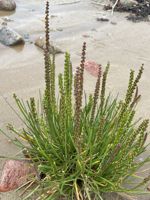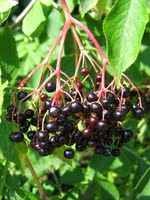Mon-Fri 9am - 5pm Mountain time
Black Elderberry vs Seaside Arrowgrass
Triglochin maritima
Sambucus canadensis
CUSTOM GROW
NOT AVAILABLE THIS SEASON - MIGHT RETURN
Seaside Arrowgrass is a native perennial commonly found in wetlands, salt marshes, and moist meadows. It is especially suitable for difficult growing sites. Its dense root system helps stabilize soil, while also providing food, cover, and habitat for small animals within the wetland community.
Seaside Arrowgrass is suitable for shoreline stabilization, wetland restoration, and naturalization projects.
Black Elderberry is a deciduous shrub native to eastern North America. You can plant this shrub in moist areas and it will help stabilize your soil. You can also use it on rural properties anywhere you'd use a lilac.
Black Elderberries are considered to be partially self-pollinating. So while they will still produce some berries without cross-pollination, planting with another variety will increase yields. Consider planting with Ranch Elderberry or Bob Gordon Elderberry.
Warning: the seeds, stems, leaves, roots, and uncooked berries of the Black Elderberry are poisonous to humans when eaten in quantity. You should cook the berries to make them safe for human consumption.
Seaside Arrowgrass Quick Facts
Black Elderberry Quick Facts
Toxicity: can be toxic to humans and livestock
Toxicity: leaves, stems, and uncooked berries are poisonous to humans

